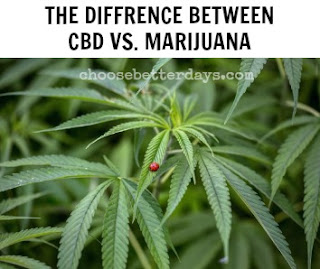If you are here, I am guessing that you are now familiar with the term CBD (cannabidiol) but you may still be unsure what the difference is between hemp-derived CBD and Marijuana is. Many people often ask how it is that they will not get a high from CBD, if it comes form cannabis?
Good question...
CBD derived from hemp does come from the cannabis plant but it is NOT marijuana. The difference is that hemp plants
contain no more than 0.3 percent (by dry weight) of THC
(tetrahydrocannabinol), the psychoactive substance found in marijuana.
By comparison, marijuana typically contains 5 to 20 percent THC.
CBD is best used as an alternative means for pain relief without the euphoria, and more importantly, without the risk of addiction. While marijuana is rich in psychoactive tetra-hydrocannabinol (THC), hemp produces mostly a non-euphoric cannabidiol (CBD.)
CBD oil is a cannabinoid derived from the cannabis plant. Hemp and hemp derived products are legal under the Farm Bill, as long as their THC content is less than 0.3%.
You CANNOT get high on hemp!
CBD is an essential component of medical marijuana,
it is derived directly from the hemp plant, which is a cousin of the
marijuana plant. While CBD is a component of marijuana (one of
hundreds), by itself it does not cause a “high.” According to a report
from the World Health Organization,
“In humans, CBD exhibits no effects indicative of any abuse or
dependence potential…To date, there is no evidence of public health
related problems associated with the use of pure CBD.”
In the U.S., people looking for pain relief often turn to opioids, popular because they can effectively block the pain receptors in your brain, but there are two major downsides: numerous side effects and a very real likelihood of addiction.
Gabriella Gobbi, professor of psychiatry
and researcher in the Brain Repair and Integrative Neuroscience (BRaIN)
Program at McGill, reported that CBD, being free from side effects, is a
safe alternative to prescription drugs for pain relief, without the “high” associated with THC.
The pain-relieving effects of the cannabis
plant (Cannabis sativa L.) are 30 times more potent than aspirin for decreasing inflammation,
according to scientists at the University of Guelph in Ontario, Canada.
According to an article in Harvard Health Publishing: "CBD has been touted for a wide variety of health issues, but the
strongest scientific evidence is for its effectiveness in treating some
of the cruelest childhood epilepsy syndromes, such as Dravet syndrome
and Lennox-Gastaut syndrome (LGS), which typically don’t respond to
anti-seizure medications. In numerous studies, CBD was able to reduce the
number of seizures, and in some cases it was able to stop them
altogether. Videos of the effects of CBD on these children and their
seizures are readily available on the Internet for viewing, and they are
quite striking."
One of the most powerful things abut using cannabis or hemp-related products is that "using cannabis, especially when it’s so
successful in bringing relief, is that it’s a natural (not
synthetic) substance that could reduce the out-of-control addiction
rates now being acknowledged by both the medical and law enforcement
communities. Plus, as noted by Medical News Today side effects from CBD
use are neither harmful nor lethal. The most common side effect was tiredness.
CBD is readily obtainable in most parts of the United States. All 50 states have laws legalizing CBD
with varying degrees of restriction. Currently, many people obtain CBD online without a medical cannabis license. According to the Farm Bill passed on Dec. 20, 2018, it is legal for farmers to grow industrial hemp for the first time
since Franklin D. Roosevelt signed the “Marijuana Tax Act of 1937.
For a visual explanation as to the difference between Hemp and Marijuana, please refer to image below:
SOURCE: Some excerpts taken from Mercola article)




